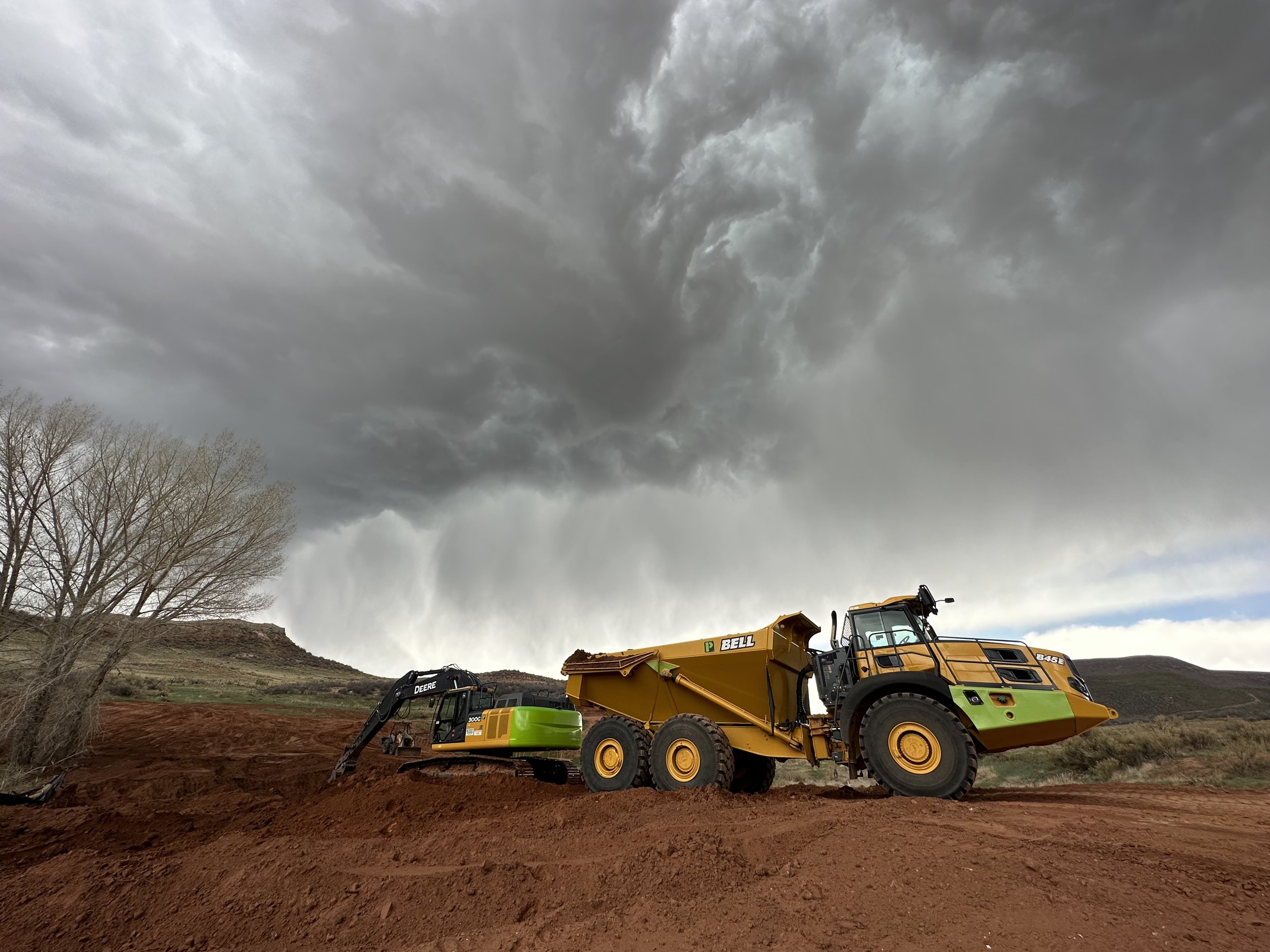How do you remove a 300 foot long earthen dam?
By: Chris Metz, Land Stewardship Tech II
Heavy equipment is an essential tool for the project.
Photo Chris Metz
A storm rolls in while working at the dam site.
Photo Chris Metz
Land Stewardship staff Chris Metz and Bill Pawleshyn stand near the area in which they are working to get a final grade on the landscape before revegetation takes place.
Photo Chris Metz
This May, members of the Natural Resources Land Stewardship team have worked to remove an earthen dam below the former homestead site on the Table Mountain parcel. The goal of this removal is to restore the natural flow of the wetland from the spring. As of Friday, May 5, all of the material from the 300 foot long, 25 foot tall earthen dam has been relocated to a pit area where it had been originally removed from decades prior.
During the upcoming week, final grading of the site will be completed. Staff will then replant native vegetation and install wattles to control erosion. Willow staking will be completed in next spring to complete wetland restoration.
This project will be one of the largest restorations completed by the land stewardship team! Typically, the excavating and dirt work is done by a contractor, and the revegetation and weed management on the back end is what we specialize in. This job has provided us with the opportunity to create our own canvas to revegetate. We are responsible for the excavation and final grade - on which we will do our planting.
How do you even begin you may ask?
To complete a task of this scale, we needed to rent large equipment. We have an Excavator with a 30 foot reach and a 2 yard bucket that we use to fill a 35 ton capacity dump truck that stands over 15 feet tall. The truck makes a short 300 meter drive to the area that we are placing the dirt where a large loader spreads the spoils from the dam and shapes it into the contours of the surrounding hillside. This process has been repeated 100’s of times over the past two weeks to get us where we are now. A smaller tractor with a box grader is used to provide a final grade of the land.
This project has been a fun, yet complicated process that has required the help of everyone involved to effectively communicate which ensures the safe and continuous operation of all of the equipment - and each of us as well.
From me loading, to Travis and the big dump truck with the excavator, to Aaron spreading the soil in the pit, while Bill uses the box grader to shape the final grade on the edges that have been completed… we all have done our individual parts to continuously and collectively move the excavation forward.
We have moved roughly forty 25,000 pound truck loads a day for 10 days! (whew)
A project of this scale has had many more people involved in addition to those on the ground. Planning has been done for nearly a year prior to the actual field work, and many different people within the Conservation, Planning and Resources team as well as the Land Stewardship programs have been involved. A project of this scale ultimately takes many people doing their jobs and working together to succeed.
I am thrilled to be a part of such a great team, and look forward to seeing what this restoration will look like a few years down the road!
Grading site at Red Mountain Open Space - Photo Chris Metz





